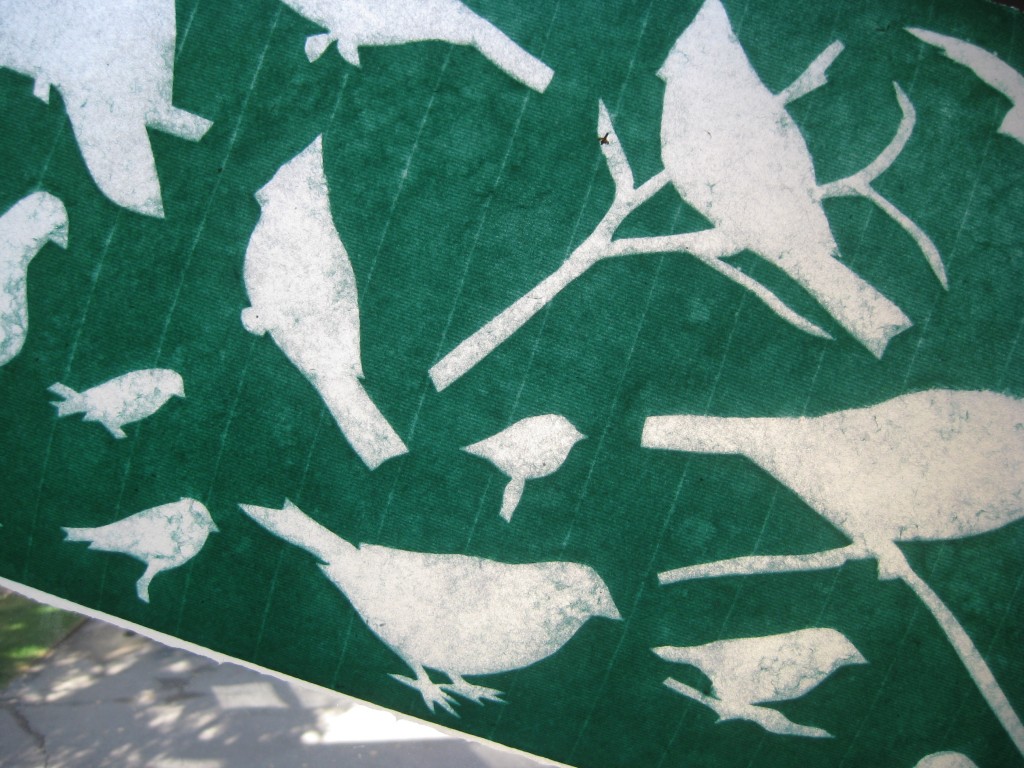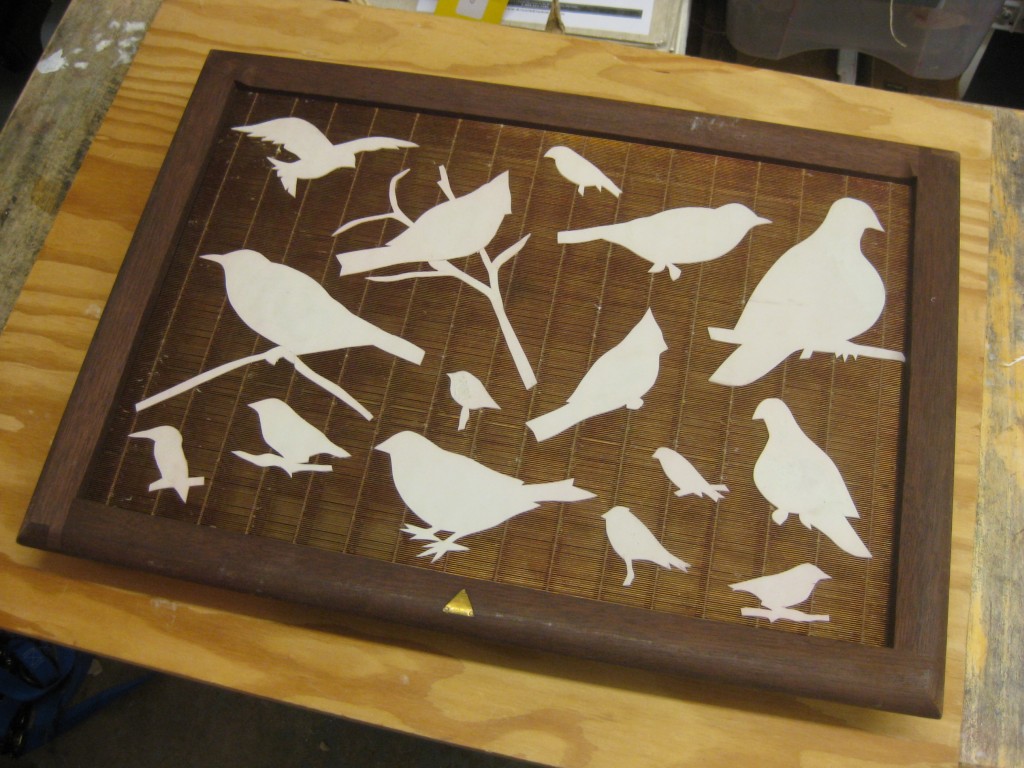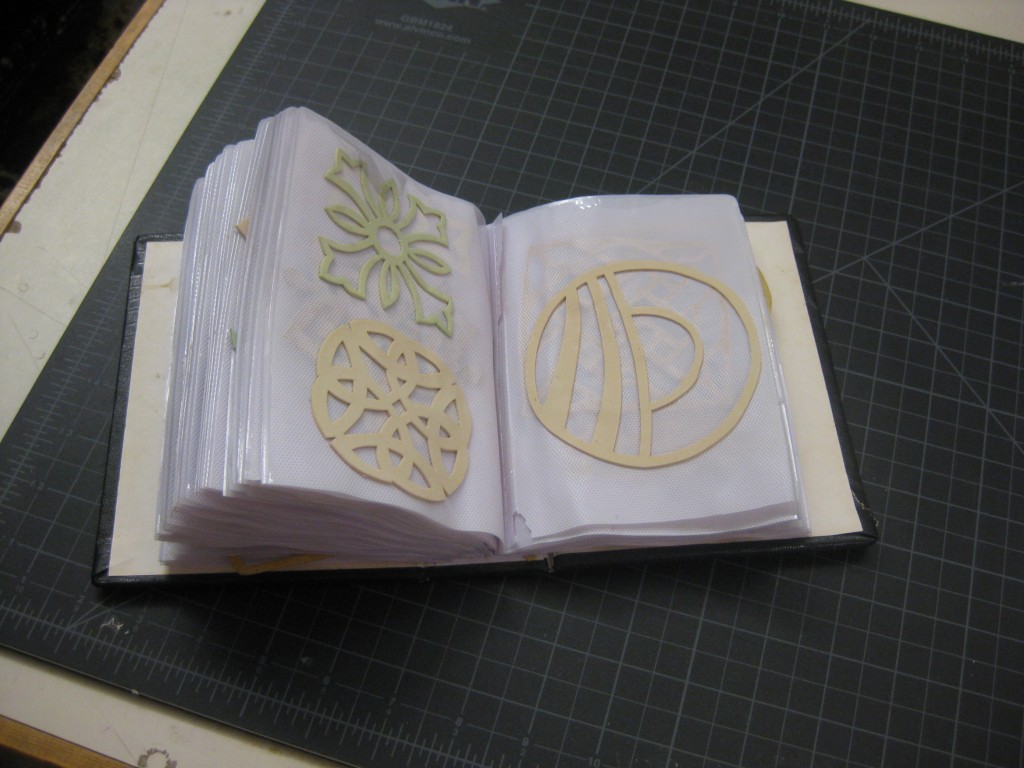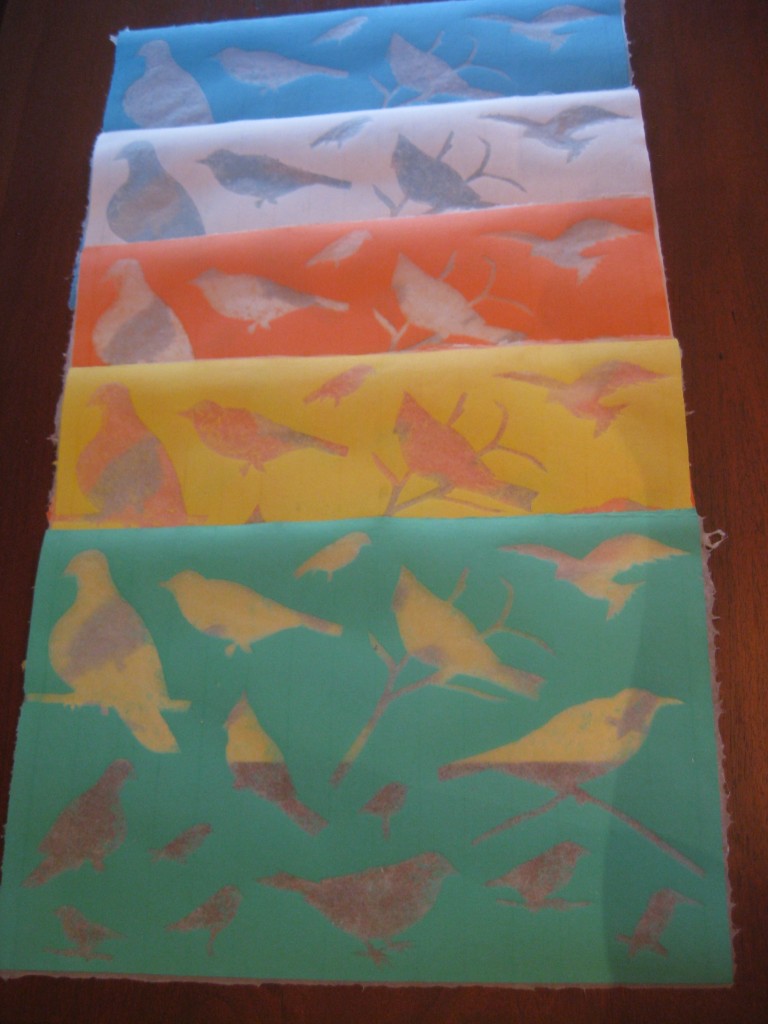A New Paper = For the Birds!
I wrote about this technique a couple of years ago in Hand Papermaking Newsletter. I came up with the technique after failing to create a unique paper utilizing a heavily pigmented watermarked paper. I have been fond of watermarking ever since I learned to make paper in the early 1990’s, and I still believe that it is an under-utilized technique that has so much potential.
After my failure (in which I wanted to have legible text that wasn’t printed, as you see in the box pictured above) I discovered that I could pull a very thin sheet of paper and let the pulp slip off of the blocked watermarked areas and then couch that sheet onto a base sheet in another color. In this case, I made a white base sheet, and the burgundy colored paper is the pseudo watermark.
Technical details:
I hand cut the bird images out of ‘buttercut’, a 1/16″ thick rubber material that has an adhesive backing using an xacto knife (you can do this digitally as well). You can get buttercut from various suppliers, including papermaking suppliers. The adhesive backing makes it simple to adhere to the mould. The adhesive even lasts for several uses!
I store my used watermarks in a small photo album (I peel off the plastic part that creates the pockets for photos to reveal a nubby backing that holds the watermark (it would be difficult to remove from the plastic, but peels right up from this nubby surface).
I used a finely beaten cotton linter (1/2 hour at 1 in my new Reina beater) as my ‘watermarking’ pulp. I charged the vat with very little of this pulp and scooped a very thin layer onto the mould. Most of it slips off of the areas covered with buttercut, but a bit stays on top, which gives it a lovely effect. For this particular paper, I first made a solid sheet of overbeaten translucent abaca paper and couched it onto my felt. Then I couched the thin colored bird veil onto the base sheet. I then pressed the sheets in a hydraulic jack press and dried them in a restraint dryer.
I’ve just realized that this technique is reminiscent of the lovely papers that Galbraith & Paul used to make for their lamps (now all of their work appears to be block printed textiles).
I held a little contest on Facebook to see who might be able to best guess my technique. I’ll be announcing the winner in just a few minutes (they will receive a free sheet of paper).





